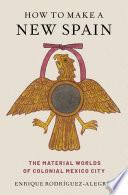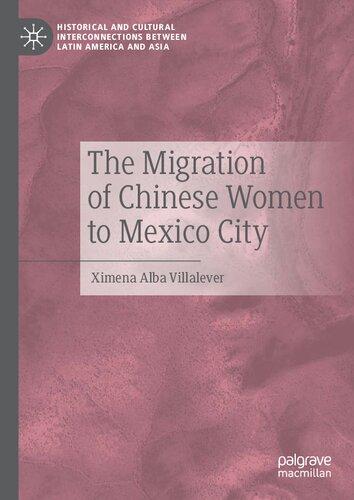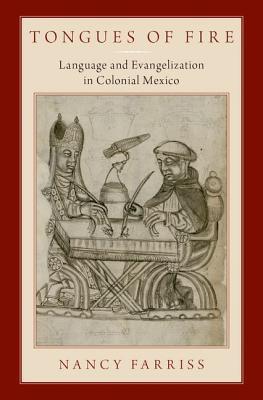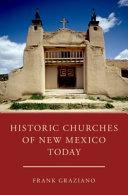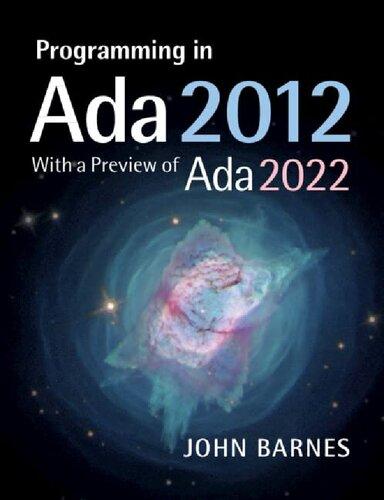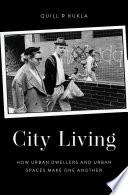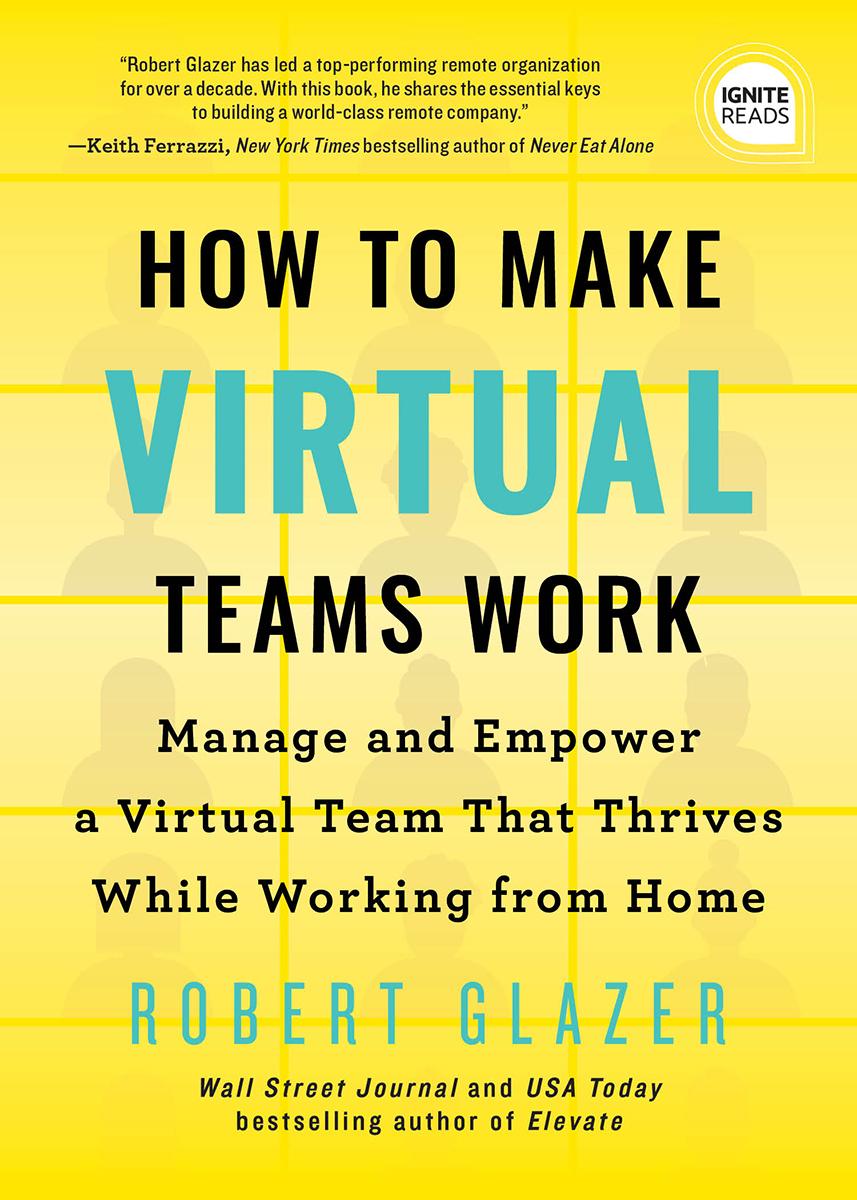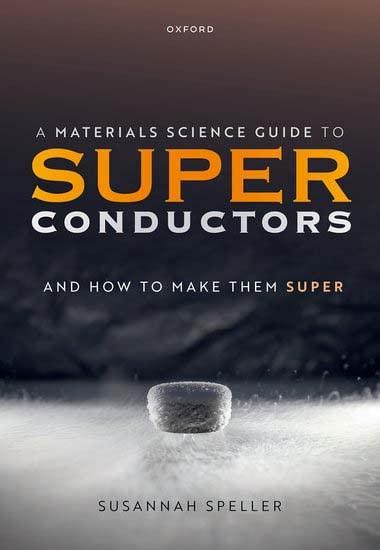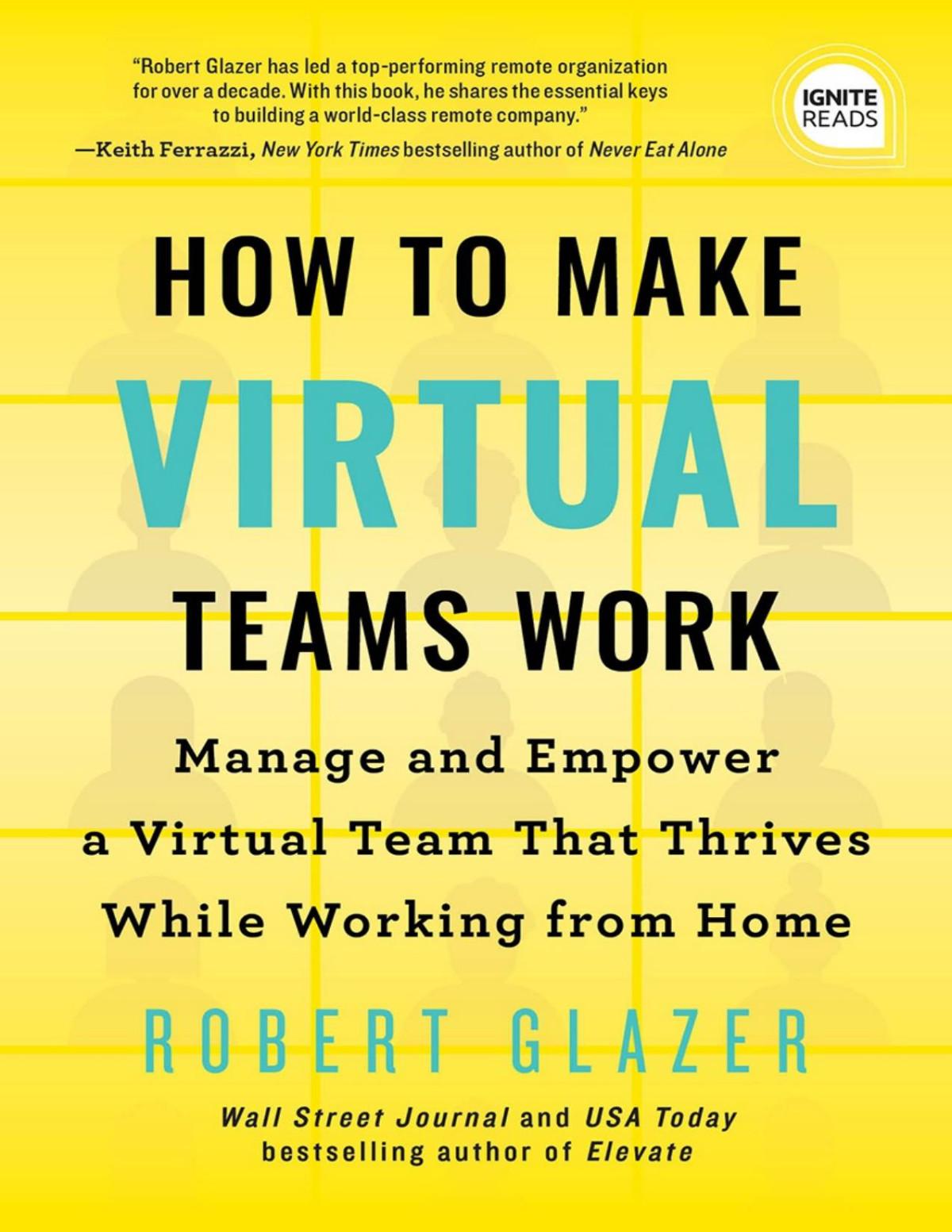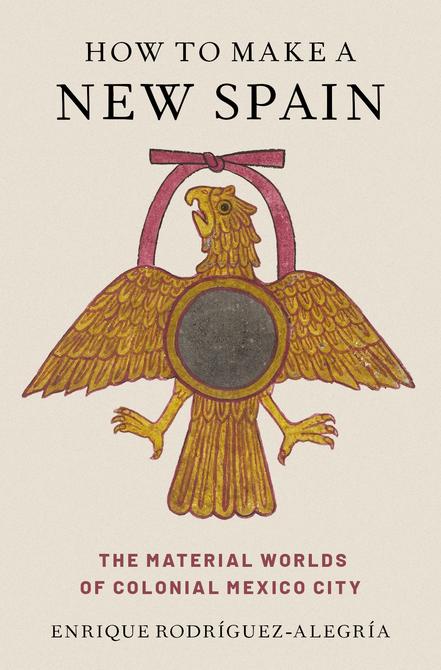How to Make a New Spain
The Material Worlds of Colonial Mexico City
ENRIQUE RODR Í GUEZ- ALEGR Í A
Oxford University Press is a department of the University of Oxford. It furthers the University’s objective of excellence in research, scholarship, and education by publishing worldwide. Oxford is a registered trade mark of Oxford University Press in the UK and certain other countries.
Published in the United States of America by Oxford University Press 198 Madison Avenue, New York, NY 10016, United States of America.
© Enrique Rodríguez-Alegría 2023
All rights reserved. No part of this publication may be reproduced, stored in a retrieval system, or transmitted, in any form or by any means, without the prior permission in writing of Oxford University Press, or as expressly permitted by law, by license, or under terms agreed with the appropriate reproduction rights organization. Inquiries concerning reproduction outside the scope of the above should be sent to the Rights Department, Oxford University Press, at the address above.
You must not circulate this work in any other form and you must impose this same condition on any acquirer.
Library of Congress Cataloging-in-Publication Data
Names: Rodríguez-Alegría, Enrique, author.
Title: How to make a new Spain : the material worlds of colonial Mexico City / Enrique Rodríguez-Alegría.
Description: 1 Edition. | New York : Oxford University Press, [2023] | Includes bibliographical references and index.
Identifiers: LCCN 2022040670 (print) | LCCN 2022040671 (ebook) | ISBN 9780197682296 (hardback) | ISBN 9780197682302 (epub) | ISBN 9780197682326 (ebook) | ISBN 9780197682319
Subjects: LCSH: Wealth—Mexico—Mexico City—History. | Taxation—Mexico—Mexico City—History. | Mexico—Colonization—History. Classification: LCC HC140. W4 R63 2023 (print) | LCC HC140. W4 (ebook) | DDC 338. 72/53—dc23/eng/20230104
LC record available at https://lccn.loc.gov/2022040670
LC ebook record available at https://lccn.loc.gov/2022040671
DOI: 10.1093/oso/9780197682296.001.0001
1 3 5 7 9 8 6 4 2
Printed by Integrated Books International, United States of America
Preface
As I finish writing this book, the people and the government of Mexico City are celebrating 500 years of resistance to the Spanish conquest. People in Mexico City, a few with painted faces and clothing in Mexica styles, participated in the celebration. The government decorated the buildings around the Zócalo, the main plaza in the city, with lighted images based on pre-Columbian monuments and artifacts. They include giant plumed serpents, geometric motifs, and even a reinterpretation of the great Coyolxauhqui monument whose discovery led to the excavations at the Templo Mayor (Matos Moctezuma 1988). The image portrayed in the Mexica monument is dismembered. All four limbs are torn from the torso, and the head is severed. The image used in the celebration of resistance is intact; the body is unharmed. Instead of communicating death and defeat, as did the Mexica monument, the lights and modern imagery communicate life and action. The image looks as if it were about to dance. The contrast between the permanence of the stone monument, which survived 500 years buried under the city, and the ephemerality of the lights display is striking. But the lighted display was transmitted immediately over the internet, potentially reaching people all over the world faster than the monument did. The lights may survive on the internet, as long as people are interested in watching them, but they will probably not survive for 500 years.
The ceremony was also surprisingly orderly, for a ceremony that celebrated resistance. Speakers waited for their turn, standing quietly next to one another, and even the most passionate of the speakers, who gave his speech in Spanish and Nahuatl, followed a strict protocol. One of the speakers mentioned the first time that electricity was brought to the Zócalo, as a clear example of progress. The same site where people celebrated resistance was a display of government-sponsored order, discipline, and progress.
A few weeks before the celebration at the Zócalo, the government of Mexico City renamed a small plaza, also with the intention of emphasizing Indigenous resistance during the conquest. The plaza had been known as Plaza de la Noche Triste (Square of the Sorrowful Night). It was reputedly the place where Hernán Cortés, who led the military conquest of Mexico,
cried under a tree after losing a battle against the Mexica. The Spanish conquistadors suffered their biggest loss in that battle. The new name of the plaza provides an entirely different way of commemorating the battle: Plaza de la Noche Victoriosa (Square of the Victorious Night). A bridge, known as Puente de Alvarado in memory of a Spanish conquistador, was renamed as Calzada México Tenochtitlan. A statue of Columbus was moved from its place in Reforma Avenue, and in its place will stand a monument to Indigenous women. These changes are celebrated, criticized, and dismissed by the media and the general public, as they debate the meaning of defeat, victory, conquest, and resistance. They also debate the value of monuments and public ceremonies to capture and communicate truth, and to do so in ways that are meaningful to people today.
Defeat, victory, conquest, and resistance are ideas that capture only a fraction of the complexity of the colonial period in Mexico. These ideas tend to emphasize a clash between two ethnic groups, or between two societies from different sides of the world. Of course, that clash was important. The battles resulted in death and much destruction. The diseases that spread as the Spanish made their way through the Americas, often preceding the colonizers, decimated Indigenous populations. Estimates indicate that between 60 and 95 percent of the Indigenous population died after contact with Europeans due to epidemics, overwork, and violence (Márquez Morfín and Storey 2017). The conquest and colonial period were indeed shaped by this encounter, or clash, between two very different societies, and our ideas about defeat, victory, conquest, and resistance certainly reflect part of what happened in the past. Coercion and violence mattered in the colonial period.
But another aspect that shaped the conquest and life in the colonial period was interethnic alliances. If people saw differences along ethnic lines, they also saw people of similar rank and status across ethnic lines. In other words, Spanish colonizers were quick to recognize who was an elite among Indigenous people, and they struck alliances with them. As they moved across the land on their way to Tenochtitlan, they met and exchanged gifts with Indigenous leaders. By seeking alliances, the conquistadors turned what would have been a small band of Spaniards trying to conquer Tenochtitlan into a giant army made up mostly of Indigenous warriors. In turn, by seeking interethnic alliances, Indigenous rulers built an army that could defeat the mighty Mexica of Tenochtitlan. Sometimes, they bolstered their own status after the conquest by appealing to powerful colonizers, or even the King of Spain, for recognition of special rights and status (Chance 2008; Cline
1986; Haskett 1991; Lockhart 1992; Matthew and Oudijk 2007; Spores 1997; Villella 2016).
Such alliances continued to shape daily life and the material world throughout the colonial period. People found motivation for their actions not just in ethnicity, but also in status, and in creating a life, a material world, and a place to live. In other words, Indigenous people sometimes defended themselves against strangers from other lands who spoke other languages, including other Indigenous groups and Spanish conquistadors. That is the resistance that gets celebrated today, although it mostly refers to resistance against the Spanish. But Indigenous people also looked for ways to create or even improve their status in colonial society. Some fought against a common enemy, and some competed against others of similar status to improve their own situation in the colonial world (Gibson 1964:156; Haskett 1991:161–163; Olko and Szemiński 2018; Ruiz Medrano and Kellogg 2010). Some may not have competed to improve their status, but instead, they worked to create their place in the world. As I will argue throughout this book, some people worked hard to validate themselves as a good builder, or a carpenter, a potter, a tailor or simply a valuable member of their society. Many people worked to forge their place in their community. Some of them probably produced the things that Spanish colonizers owned, and that I study in this book. My focus is on the material worlds of Spanish colonizers, and those worlds were created by people who sometimes competed with one another, sometimes resisted the Spanish, sometimes created the material worlds of the colonizers, and whose behaviors cannot be seen simply as resistance, defeat, victory, or serving an ethnically defined interest.
These celebrations, commemorations, and acts of renaming of public spaces are exciting. They are a reminder that what happened in the conquest and the colonial period, some 500 years ago, is still politically relevant. Those events matter to people today, and people are actively reexamining them. I propose that in addition to viewing life in colonial Mexico as an ethnic clash, or a matter of defeat or resistance, we also examine how people actively shaped the encounter based on interests related to class, social inequality, and to building their own place in the world.
Acknowledgments
Several institutions provided support for this project. A National Science Foundation Doctoral Dissertation Improvement Grant (BCS-0083274) and a Minority Post-Doctoral Research Fellowship (SES-0309796) supported my research at the Archivo General de Indias in Seville. Those two grants made it possible for me to collect the data from the probate inventories that form the basis of this book. A Fellowship from the National Endowment from the Humanities supported part of the writing portion of the project, along with a Supplemental College Research Fellowship from the College of Liberal Arts at the University of Texas at Austin. A Visiting Fellowship from Bard Graduate Center allowed me to continue writing and almost finish the manuscript. I am grateful for the support of these different institutions. Without their support, I may have never finished this project.
My three mentors deserve many thanks for their help in this project. First, I thank Kathy Morrison, who insisted that I look at probate inventories and check whether there was truly a simple, direct relationship between wealth and consumption of Spanish goods among colonizers. At the time, I was sure that there must be such a relationship, and that checking whether it existed was a waste of time, but I decided to look at the probate inventories because I could spend some time in Seville. Kathy was right in making me check (the relationship was neither simple nor direct), and I was wrong, and not only did I get to live in Seville, which has become one of my favorite cities, but I also got to write this book.
Second, I must thank Elizabeth Brumfiel for taking me to the Templo Mayor for the first time and introducing me to some of the archaeologists there. She encouraged me to pursue the analysis of colonial material and helped me formulate part of the research. I am grateful for her years of mentorship, criticism, and encouragement.
And third, I thank Sam Wilson, who really deserves a lot of credit for the completion of this book. He made most of the drawings that you will see in this book, prepared other figures for publication, and gave me feedback on the entire manuscript, chapter by chapter. His work and influence on my
work can be seen throughout this manuscript. Without his support and hard work, I doubt that I would have finished this book.
I owe this project also to the archaeologists in Mexico who welcomed me and gave me access to the material they had excavated. They had no reason to offer me such hospitality, other than the fact that they are great people and some of the best archaeologists in the world. I especially thank Raúl Barrera Rivera, Francisco Hinojosa, Flor Rivas García, Alvaro Barrera, Alicia Islas, Socorro Alvarado, María de Lourdes Gallardo Parrodi, and many other archaeologists who worked with the Programa de Arqueología Urbana. Their fine work and publications made this book possible.
Several colleagues and friends read different chapters and provided feedback that improved the manuscript significantly. Franz Scaramelli and Kay Tarble provided much needed feedback on the Introduction. Gustav Peebles, John Millhauser, and Noa Corcoran-Tadd provided feedback on Chapter 2, my first attempt at writing about the confusing world of money. Silvia Saladrigas Cheng was gracious enough to help me correct several errors in the classification of textiles in Chapter 5, even though I reached out to her as a complete stranger, over email. Nancy Whittier replied to some questions that I had about the statistics I used in Chapter 7 and helped me figure out what I was doing. I had conversations about my discussion of materiality with Jonathan Sterne, Kristin De Lucia, and Barbara Voss, and those interactions shaped my thinking significantly. Gwen Ruth Jones, Blair Heidkamp, Anya Gruber, and Zack Scholsberg provided comments on a draft of the conclusion. I also had plenty of conversations on materiality and on the topics that I touch upon in this book with Shannon Iverson, Emily Dylla, Ana María Navas Méndez, and Emmy Dawson. Julia Guernsey read a first draft of the preface and helped me improve it, and the casual discussions I had with her about materiality helped me immensely. I am grateful for their comments and all their feedback. They all have influenced my thinking for this book.
I presented an early version of Chapter 2 at the Archaeological Research Facility, University of California Berkeley, and later at the Archaeological Research Center at UC, Santa Cruz. I thank all the faculty and students who provided thoughtful comments and asked interesting questions at those two presentations, especially Christine Hastorf, Meg Conkey, J. Cameron Monroe, Tsim Schneider, and Chelsea Blackmore for their great conversation and hospitality.
I spent only six weeks at Bard Graduate Center before I left rather unexpectedly because of the COVID-19 pandemic. Still, Bard left a mark on my book, especially through the many conversations I had with people who are interested in the material world. I thank everyone who attended my brown bag lecture, and especially Soon Kai Poh, Hazel Clark, Stefan Heidemann, Meredith Linn, and Casper Meyer for their comments and suggestions. Peter Miller deserves very special thanks for his comments, stimulating conversation, and for welcoming me at such a vibrant and active community as Bard.
How to Enter the Material and Social Worlds
When Spanish colonizers and their slaves arrived in central Mexico in the sixteenth century—many today would say invaded—they entered a world different from anything they had ever experienced. The variety of temples and houses were unlike those in Europe. The furniture that Indigenous people had was extremely simple, consisting mostly of reed mats (Aguilera 1985), in comparison to the bulkier wooden chairs, tables, beds, desks, and many other pieces of furniture seen in Europe at the time (Aguiló Alonso 1993). The clothing that Indigenous men wore, mostly loincloths and capes, made them look naked to colonizers, who were more accustomed to seeing men in layers of clothing that covered the entire body (Bernis 1962). Yet the Spanish also praised the high-quality cloth woven by Indigenous women (Blum 2006:146–147). The food consisted of an endless variety of dishes and ingredients unrelated to anything they had in Spain at the time. Indigenous people ate corn tortillas and tamales instead of wheat bread, and spiced their food intensely with chilies. Some of the pottery was different from what they knew in Spain. Some of the animals, including the beautiful xoloitzcuintle (often known as Mexican Hairless Dog) and the turkey, and many plants, were simply exotic. The stone tools were quite unlike the metal tools in Europe at the time. It is difficult to overstate the differences between the material world in Mexico City and the material world that colonizers had left across the ocean. Colonizers who wanted to create a material world that resembled the world they were used to, had one big challenge: how to make a new Spain. They had to figure out how to construct the kinds of houses that fit their ideas of proper housing. They had to figure out how to get the kinds of clothes that fit their sense of propriety, decency, and hygiene. They had to figure out how to obtain the foods they missed and wanted to eat, or find local substitutes.
Indigenous people at the time also saw things that they had never experienced before, including the clothing and armor of colonizers, their livestock,
How to Make a New Spain. Enrique Rodríguez-Alegría, Oxford University Press. © Enrique Rodríguez-Alegría 2023.
DOI: 10.1093/oso/9780197682296.003.0001
their steel swords and metal tools, their wooden boxes, and the many other things that colonizers brought with them on their ships. There was a new challenge for Indigenous people: how to make the things that the Spanish brought. Some were enslaved and learned the crafts of the colonizers, including shoemaking, tailoring, ironworking, and others. Some Indigenous people took up that challenge out of their own volition and interest, sometimes in spite of Spanish attempts at preventing them from learning the skills and secrets of their crafts. In a famous passage written in the 1530s, fray Toribio de Benavente (Motolinía) wrote that Indigenous people made all sorts of Spanish goods, including clothing, different kinds of shoes and sandals, whips, furniture, saddles, ironwork, and many others. He claimed that they often learned by stealing goods from the Spanish and figuring out how to make them. He even praised the good quality of the goods, and wrote that the houses of colonizers were full of chairs made by Indigenous people (Benavente 1985:262–263). But it is difficult to generalize from one statement, especially a passage as impressionistic and vague as Benavente’s. Did Indigenous people fill the houses of colonizers with their products? Did colonizers reject or embrace their products? How did different people, including colonizers and Indigenous people, create the material worlds of New Spain?
In this book, I present a partial description of the material worlds of sixteenth-century Mexico City, focusing on the archaeological remains found in the houses of colonizers in the center of the city, and on the probate inventories of thirty-nine colonizers. The questions that drive this project forward belong in three interrelated groups. First, I ask what the material world of Spanish colonizers was like: what things did they own? How did they dress, and what did they eat? What were their houses like? Every chapter of this book contains descriptions of the things that colonizers owned, and plenty of quantitative analysis of what was in the inventories. But the answers to these questions do not end at description. Archaeological artifacts and historical documents offer different opportunities to know the origin of the things that colonizers owned, leading to a second group of questions: did colonizers adopt Indigenous things, or did they only own European and perhaps Asian things? Did colonizers adopt Indigenous technologies? The question of whether colonizers adopted Indigenous things has been the subject of much research both in Mexico and in the Spanish colonies in general (e.g., Charlton and Fournier 2011; Charlton et al. 1995; Deagan 1983, 1995, 1998, 2001; Fournier 1998; Fournier García 1997; Hernández Sánchez 2012, 2019;
Jamieson 2000a, 2000b, 2004; McEwan 1992, 1995; Montúfar López 2003; Rodríguez-Alegría 2005a, 2005b, 2016a; Voss 2005, 2008a). Many scholars have also been interested in patterns and processes of change in Indigenous technologies in colonial Mexico (e.g., Alexander 2019; Charlton 1968; Forde 2017; Foster 1960; Hernández Sánchez 2012; Pastrana 1998; RodríguezAlegría 2008a, 2008b, 2016a), but the question of whether colonizers adopted Indigenous technologies has not been the subject of nearly as much research. In this book, I provide new insights on the complex process of Spanish adoption of Indigenous technologies.
Finally, a third group of questions brings together the description of the material worlds of colonizers with an analysis of socioeconomic status, wealth, and political strategies among colonizers: what was the relationship between wealth and patterns of ownership and consumption of Indigenous and imported goods among colonizers? Did wealthy colonizers generally reject things made by Indigenous people? Did wealth and socioeconomic status shape patterns of consumption? Or did political strategies, personal connections, and factors other than wealth guide the choices of colonizers? Perhaps colonizers were guided by a sense of ethnic solidarity with each other, and separatism from Indigenous people, but wealth shaped their ability to obtain expensive imports. Or perhaps colonizers recognized power among Indigenous people and were more interested in creating links to powerful Indigenous people and less interested in emphasizing ethnic differences. The patterns that can be seen in the archaeological data and the probate inventories provide fresh insights into the links between the material and the social worlds.
Material and Social Worlds
One only needs to think of foundational works by Marx (Tucker 1978), early ethnographic works by Malinowski (1922) and Mauss (1924), and archaeological work by Pitt-Rivers (1875) to see a long scholarly tradition that has related the material and the social world. But according to Cochran and Beaudry (2006:193), a new wave of scholarship that began in the 1970s resumed in earnest a discussion of the interrelation between the social and the material worlds. Influential works, including Arjun Appadurai’s The Social Life of Things (1986) and Daniel Miller’s Material Culture and Mass Consumption (1987) have helped scholars see objects as part of the social
world, and reconstitute “material culture studies as a people-centered, relational field of study” (Cochran and Beaudry 2006:193). Plenty of scholars agree today that material culture is part of society and that social life is material (e.g., Acuto 2005; Gosden 2005; Latour 1993, 1996; Miller 2005; White and Beaudry 2009). The literature on materiality is vast, and other authors have provided useful discussions of the historical development of this literature (e.g., Cochran and Beaudry 2006; Hicks 2012). In this discussion, I focus on ideas that I have found useful or important to debate, especially ideas that have been particularly influential in the past twenty years, rather than on an historical take on the development of the debates on materiality.
The idea that people and the material world “mutually constitute” one another has become a mantra among archaeologists in recent years. People and things create one another (Johnson 2010:264). Acuto (2005:211), for example, is among many who see material culture as an integral part of being human. He has argued that viewing objects as an active part of social life is not enough, and we should instead view them as part of who we are as human beings. He proposes a dialectical relationship between people and things, in which both form and transform one another through time. Scholars in other disciplines have proposed a greater integration between people and things. A particularly provocative example is Donna Haraway’s “A Cyborg Manifesto.” Haraway writes that “we are all chimeras, theorized and fabricated hybrids of machine and organism; in short, we are cyborgs” (1991:150). She argues that twentieth-century society has broken down the boundaries between animal and human, between machines and humans, and between what is imagined and what is material. The strict differentiation between organism and machine is for Haraway part of Western sexist, capitalist, male-dominated science and politics (1991). Bruno Latour also provides provocative ideas about the material and human worlds when he argues that he wants “to end the partition between materialist and culturalist accounts” of technological change (1993:377). He has proposed that people enlist objects into their actions, making society not just a group of people and their beliefs, but a network of human and nonhuman actors. For Latour, things are not simply objects. Society is inseparable from its material and technological projects, and a dialectical approach only obscures the analysis of the actor network that forms society by separating actors (people and things, among them) that are really part of a single whole (Latour 1993, 1996). In a different proposal, Miller (2005) attempts to transcend the duality between subjects and objects. He wishes to set people or society aside as the
main focus of anthropology, arguing that there is no distinction between humanity and materiality.
In the past few decades, agency has become perhaps the most commonly used concept to propose different relationships between materiality and society. Agency often feels like both a mandatory topic of discussion and a burden on the debate. Twenty years ago, Marcia-Anne Dobres and John Robb had already written that agency had become one of the buzzwords in archaeology, even though “there is little consensus about what ‘agency’ actually means” (2000:3). They compile a range of definitions of agency, many of which relate explicitly to the material world, including “the imposition of form on material via socially situated creative activity,” and “a process of intersubjective engagement with the material and social world” (Dobres and Robb 2000:9). Four years later, Robb (2004) wrote that definitions or ideas about agency hinge around two different criteria. Some definitions emphasize agency as having some sort of effect on human events, which Robb calls “effective agency” (2004:132). Other definitions emphasize agency as resulting in actions that are conscious or intentional, which Robb calls “conscious agency” (2004:132). Regardless of their particular definition, scholars typically use the concept of agency to propose arguments about how people and things shape ideas, actions, and society.
Calls to set society aside in order to make things the center of analysis and to endow things with power or agency seem to be more common than ever (Johannsen 2012). Alfred Gell (1998), and other scholars, including Latour (1993, 1996), have argued that things should be considered agents, just as much as people, and they have inspired much scholarship on this matter. In an influential article, Gosden (2005) asked “What do objects want?” and claimed that things have agency. By arguing that things have agency, he means that things have an effect on people and other things. People are not the only ones who affect things or one another. Things can shape the way we move, how we travel around a city, how we make new things, how we think, etc. The idea that things can affect people’s lives and decisions is not new, and seems to me uncontroversial, although I would argue that people knew that things had an effect on human behavior even before these scholars wrote about things having agency. But Gosden’s proposal is radical, because he argues that materiality, and not society, should be the focus of anthropological research. He believes anthropologists have reified society, and we should focus instead on materiality. “Things create people,” he writes (Gosden 2005:194). Instead of people making things, “objects use human muscles
and skills to bring about their own reproduction” (Gosden 2005:194). People in Gosden’s approach appear passive and unimportant. The idea of “material agency” (Cochran and Beaudry 2006:196), or the “Inanimate Agency Proposition” (Johannsen 2012), appears in different forms in the scholarly literature as a way of extending the active roles that things can play in society.
Hodder (2012), for example, has argued that a problem with studies of materiality is that they do not focus enough on things. He believes that scholars tend to write about things without going into details of things’ appearance, the materials that form them, where they were made, their relationships with other things, and many other aspects of things. He believes many studies are too anthropocentric, focusing too much on what people do with things rather than on what things do, how things relate to one another, and what they are made of. Anthropocentrism, or an approach in which things are part of people’s world, and people make things, use them, and are generally the ones doing the action (the ones with agency, for those more comfortable with the term), offers too limited a view of the material world for Hodder.
The current literature on material culture and society presents many ideas that are useful and that I will embrace in this project. The literature shows that studying the material world is important in and of itself, because the material world and society are linked, or intertwined, or one and the same (Acuto 2005; Gosden 2005; Latour 1993, 1996; Miller 2005; White and Beaudry 2009), or because people and things are entangled in complex relationships. Some of those relationships are more difficult to escape than others (Hodder 2012). Our relationship with things is part of daily habits, practices that shape socialization, and the lived experience (Bourdieu 1977; Loren 2015:144). Material things are not just the result of ideas, but also the source of ideas to begin with (Gosden 2005:196; Malafouris 2013; Renfrew 2004). Things can also be created and used to promote ideas and ideologies (DeMarrais et al. 1996), and they can shape people’s behavior and expectations even in ways that may go unnoticed. Material relationships can be strongly political and have major consequences. People enter different relationships with things and with one another in terms of production, ownership, and exchange of things, and those relationships have political, economic, and historical consequences (Tucker 1978; Voss 2008a).
The literature also presents some ideas that will be tangential to this work, but that may be useful from time to time. These include the idea that humans cannot necessarily control things, at least not always and not entirely. Things may reproduce on their own, as in the case of livestock, plants, and other
living things. Some things can appear or disappear and create havoc in people’s lives, as could be the case with volcanic eruptions, droughts, floods, and other environmental and geological phenomena. Things decay on their own, and there is often very little that humans can do about it. In short, the material world is not always and not completely under human control, but its effects on humans can be strong (Hodder 2012; Miller 2005). Control over things and over production of things can depend on human relations and differential access to the material world (Tucker 1978), and on knowledge and skill (Ingold 2013).
Finally, the literature on materiality presents some ideas that I find problematic. The first problem is not so much an idea that is written explicitly, but a result of scholarly practice: the use of agency as mandatory concept in discussions of materiality and society. Sure, the concept has been useful in some ways. Scholars used it to draw attention to human action and intention (although intention is certainly not part of all definitions of agency), and to show that human action is not just part of a structure that determines behavior (Johnson 2000:213). Humans can act in creative ways that are not entirely determined by their surroundings, their social status, their situation, or any other factors external to them, including their material conditions. The concept helped scholars think productively especially in debates that saw agency in its relationship to its recently neglected partner, structure (see papers in Hendon and Joyce 2004). In fact, ideas that I present shortly, about the need to think clearly about who or what is doing the action when we write about material culture, probably formed in my head as a result of reading the literature on agency. But as much as the concept has been useful, it is not necessary to let all discussions of materiality and society hinge on agency or become a contest in which one needs to determine whether humans or things have more agency. A problem with agency lies with the diverse definitions of the concept (Dobres and Robb 2000). The difficulties in defining agency present the distraction of a debate that often ends up focusing on the concept itself. I would argue that it is entirely possible to discuss the material world without coming up with a new definition of agency, or using the concept at all, in spite of the ongoing focus on agency in much of the literature on materiality. We can, in fact, go beyond agency as we think of materiality (Robb 2010).
Another problem with the concept of agency, especially when scholars argue that things have agency, is that inanimate agency is modeled after human agency. In other words, things end up seeming like their agency is
just like the agency of humans. Things have projects, they bring about their reproduction, they enlist humans and other things into their projects, and in the end, they lack any “otherness” in their materiality or in their relationship to humans (Johannsen 2012:307). In the rest of this book I purposefully abandon any use of the concept of agency except for when I discuss ideas presented by other scholars that are strongly tied to the concept. My goal is not to examine the agency of things or to define agency at all, but rather to find how people created, traded, used, exchanged, or otherwise related to things and to other people in colonial Mexico City.
A second problematic idea in the literature on materiality, and certainly the most important from the point of view of this work, is the call to set aside the study of society and instead focus on things. As discussed previously, various authors have presented different versions of this idea and tried to endow things with agency (however defined) and to decenter society as our main subject of study. For example, both Hodder (2012) and Gosden (2005) set aside political and historical factors in their musings about things. Gosden (2005), using a case of Roman colonialism, brushed power considerations away. He focused not on the power relationships between people, but on how things, or styles, shaped the production of new things. Hodder (2012), uses several “thought experiments” and anecdotal examples, rather than historical or ethnographic cases. For example, one of the thought experiments involves an impossibility: a child suspended without any contact with any material thing, in the dark, with no sound and no sensory input. Another example focuses on a wheel and how the wooden wheel depends on a metal sheet wrapped around it to be more resistant. In the literature that calls for decentering society and focusing on the agency of things, there is a common thread: society is usually treated as if it were homogeneous. Scholars who are promoting ideas that aim to redirect scholarly focus on the agency of things usually write about “people” as a unitary category, even though in most historical contexts people rarely treat each other as equals. People have created systems of social inequality, slavery, poverty, racism, sexism, homophobia, and many other factors that have shaped the lives of billions of people and their relationships with the material worlds. Many of the examples and thought experiments that convey the idea that things depend on one another or that a thing-centered approach is desirable only seem to work precisely because they leave out social difference and conflicts between people.
In spite of their significant contributions to the field, folks who have promoted ideas about the agency of things often seem to forget that humans
have historically not treated one another as equals. In their debates about the relationship between humans and things, they have not shown much interest in the ways that feminist scholars and people of color have found various social groups to shape society in important ways. When discussing these ideas, Ana María Navas Mendez, and archaeologist and graduate student of mine, argued that although saying that we need to redirect attention to the agency of things may sound like a politically neutral statement, it is inherently political, because it ignores important and ongoing debates about social inequality both in the past and in the present (personal communication, January 2020). Thirty years ago, Brumfiel (1992) critiqued a previous generation of archaeologists for focusing on whole populations and ignoring the role of conflict and negotiation between different social groups within those populations. I argue that if we simplify materiality as a relationship between humans on one hand and things on the other, we are reproducing the same problems that Brumfiel noted in previous generations of archaeologists.
I find greater inspiration in scholarship that draws attention to society and how people involve things in their daily lives, often to create, manipulate, or try to erase differences between people. Feminist scholars, and scholars interested in gender from various perspectives, have shown that women and men involve material things in different productive activities, and that they sometimes use things to negotiate power, and create or challenge gender hierarchies (e.g., Gero and Conkey 1991; Joyce 2000; Robin and Brumfiel 2010), and reformulate gender and ethnic identities (Deagan 1983, 2001; Jamieson 2000a, 2000b; Voss 2008a; Voss and Casella 2012). Many scholars have shown that people have shaped urban layouts and architecture to manipulate social relations and power hierarchies, often in racialized ways (e.g., Amaral 2017; Jamieson 2000a, 2000b; Low 1995; Mier y Terán Rocha 2005; Mundy 2015; Nemser 2017; Ortiz Crespo 2006; Sanoja and Vargas-Arenas 2002; Sanz Camañes 2004:33–38; Therrien 2016; Voss 2005, 2008a; Wagner et al. 2013; Wernke 2012; Zarankin and Funari 2020). Many scholars have also shown that everyday household objects are important in how people create and manage ethnic or cultural difference, enforce or resist political and social oppression, and negotiate social relations (e.g., Bauer 2001; Benítez 1993; Deagan 1983, 1998, 2001; Jamieson 2000b; Lister and Lister 1982; McEwan 1991, 1992, 1995; Oland 2014, 2017; Robin 2014; RodríguezAlegría 2005a, 2016a; Voss 2005, 2008a). Scholars have shown that people involve dress to control people or to challenge normative ideas of beauty and value or conform to them, and to help form social identities. Many of these
ideas and identities are related to power (e.g., Flewellen 2018; Franklin 2020; Loren 2010; Scaramelli and Tarble de Scaramelli 2005; Voss 2008a). This book builds on the work of all of these scholars who have demonstrated the value of studying the relationship between people and things, and to keep differences between people—along lines of gender, sexuality, class, ethnicity, culture, and any other differences—at the center of analysis. The chapters in this book build upon the debates presented by these and other scholars.
Keeping people at the center of analysis, however, can be challenging, perhaps because of the world of concepts and analytical categories that shape the debates. Sometimes scholars write as if abstractions or analytical categories are doing the action (or as if abstractions had agency, for those more comfortable holding on to the term). In other words, the subject of a sentence, the part that is doing the action, is often a concept rather than a person or even a thing. For example, when scholars discuss how social class affects patterns of consumption (Chapter 7), sometimes it is not people who are doing the action, but a concept: class. Class determines what people buy, what people like, and people have little choice and little possibility to enact social change through consumption. Some archaeologists have critiqued the idea that class determines consumption patterns precisely because they feel that such an approach makes people seem passive and as if they were playing out roles that are predetermined for them. These archaeologists prefer to evaluate what people do, or what they consume, independently of a determination of their social class. That way, it is possible to view people as active, rather than projecting all the action onto abstractions such as class or wealth (e.g., Henry 1996; Tarble 2008). The same could be said about other factors, such as ethnicity, gender, educational capital, and many other conceptual categories. On one hand, it is entirely possible that people simply do not have infinite choices, and people are often unaware of choices that they have (Chapter 7). On the other hand, if we want to make people the active part of the story, we should not unwittingly make analytical concepts do the action. We may classify people into social classes, and people may still act in ways that do not conform to what others in their social class are doing.
I find the same problem in approaches that seek to address the function of things, even in scholarship that precedes the literature on the agency of things: sometimes authors let analytical concepts do the work that things could be doing. For example, as I will discuss in Chapter 1, there is a long scholarly tradition in which authors claim that money has three main functions: facilitating exchange, fixing value, and accumulating wealth
(Jevons 1896:13–18; Neale 1976:7; Papadopoulos 2012:265; Vilar 1976:19; Wallace 1987:396–397; Weber [1922]1978:76). At first glance, the question of the functions of money seems to focus on things: money has specific functions that define it. But instead of focusing on things, the agent of the story is an abstraction: money. Money is a concept born out of material things, but it is still a culturally constituted abstraction. In this example, a more concrete way of injecting agency into things would be to explain how specific coins (less abstract that money) were used. And a more anthropocentric way of studying coins would be not to focus on the functions that some coins served, but to focus instead on how people used those coins. Such an approach, as I will show in Chapter 1, can expose the many ways in which people used coins, shaped the coins themselves, reformulated the materials that coins were made out of, built their wealth, and managed socioeconomic relationships.
It is worth examining variation in people’s behavior and consumption patterns, rather than letting analytical concepts do the work, and this is a challenge that I take up repeatedly in this book. This idea that we must pay attention to who is doing the action is what I discussed earlier as a probable result of my consideration of the literature on agency, a concept that I will now set aside for the rest of the book. Keeping different individuals and groups of people at the center of analysis, studying how they involved material goods in their struggles for power, and examining how they experienced the material world are themes that I weave together in the following chapters.
From Tenochtitlan to Mexico City
Sixteenth century Mexico City was the site of the many social and material struggles and challenges examined in this book. Indigenous people knew Mexico City as Mexico-Tenochtitlan, Mexico, or Tenochtitlan. It was one of the three capitals of the empire of the Triple Alliance, more commonly known today as the Aztec empire (Berdan 2017; Rojas 2017; see Nichols and Rodríguez-Alegría 2017 for a discussion on the names of the empire). The two other capitals were Texcoco and Tlacopan, two nearby city-states, although it is pretty clear that the elites of Tenochtitlan were dominant in terms of politics and military matters (Berdan 2014:140). In the middle of the city was the great temple of the Mexica, known today as the Templo Mayor, surrounded by Mexica palaces, temples, schools, and other civic and religious
facilities (López Austin and López Luján 2017; Rojas 2017). In 1521, many buildings in the city were partially destroyed, after two years of epidemics, encounters, feasts, skirmishes, and major battles between Indigenous people and foreigners, mostly from Spain. In spite of the violence, the city remained largely an Indigenous city into the colonial period (Mundy 2015:3). After the battles of 1521, both colonizers and Indigenous people began a complex process of rebuilding, destruction, change and continuity in the use of space, demographic change, and appropriation (Rodríguez-Alegría 2017).
Scholars traditionally have written about the events of 1521 as the Spanish Conquest of Tenochtitlan, based on the writings of Spanish chroniclers at the time (e.g., Cortés 2003; Díaz del Castillo 1942). Chroniclers eagerly declared victory over the Indigenous armies of Tenochtitlan, and hyperbolically described dramatic battles between very few Spaniards and Indigenous armies that outnumbered them exponentially (Oudijk 2012; Restall 2003). More recently, scholars have shown that the Spanish conquerors were outnumbered by their Indigenous allies. The conquest resembles a gigantic Indigenous insurrection against Tenochtitlan rather than a small band of Spaniards conquering a huge army of Indians (Matthew and Oudijk 2007; Oudijk 2012; Restall 2003). Scholars have pointed out that the term “conquest” and the events of 1521 are often entirely absent from chronicles written by Indigenous people. Susan Schroeder (2007:13) has argued that many Indigenous people saw what the Spanish called “the conquest” as “a nonevent.” Some Indigenous books narrate history since before the sixteenth century, and they lack the dramatic narratives of the conquest that the Spanish preferred. In many Indigenous books, Spaniards begin to appear as new characters in the story, without any mention of a dramatic conquest (Boone 2000:229).
Even before scholars questioned the view of the conquest as an epic battle between a few conquistadors and hordes of Indigenous warriors, they were studying aspects of change and continuity in the years after 1521. Their work is vital in assessing the effects and consequences of the conquest. Most agree that catastrophic depopulation was among the most dramatic consequences of the arrival of the Spanish. Scholars often cite Calnek’s (1974) estimate of 150,000 to 200,000 people in Tenochtitlan before the epidemics, although it is quite possible that the city was closer to between 72,000 to 108,000. The specific number of Indigenous people in Tenochtitlan at the time is impossible to verify (Márquez Morfín and Storey 2017). Epidemics never before seen in Central Mexico, including smallpox, influenza, measles, and others
killed significant fractions of the population. Estimates vary widely, but scholars have argued that between 66 and 95 percent of the Indigenous population was lost to epidemics, warfare, and abuse (Gerhard 1993; Márquez Morfín and Storey 2017). The broad range of this depopulation estimate should not distract from the agreement that depopulation was catastrophic. Márquez Morfín and Storey (2017:195) explain that “to argue about whether the precise figure was 66 or 75%, or even 95%, is less important than grasping the tragedy of the post-Conquest demographic history of Mesoamerica.” Population losses in different regions in Mesoamerica impacted labor regimes. Sometimes tribute demands were not reduced along with the populations (Fowler 1993). Reduced populations may have also had an effect on production, sometimes eliminating the elders who could transmit expertise and artisanal knowledge to new generations of producers of items like pottery (Charlton 1968, 1979) and others. The suffering caused by disease and the trauma of death is too big to comprehend.
Another demographic effect of the conquest was mixing between Indigenous people, colonizers and Africans and Afro-descendants. Spanish colonizers and Black people (whether free or enslaved, from Africa or from the Caribbean) made up approximately 1 to 2 percent of the population in the colonial period (Aguirre Beltrán 1981:198), and they mixed with Indigenous folks. People of mixed descent would soon be known as castas, and even though it is difficult to estimate how many castas there were with clarity, Valero (1991:163) identified around 3,000 castas in Mexico City in historical documents from before 1560. There must have been plenty more castas whose lives are not part of the documentary record, or whose documents have not been found by modern scholars. In addition, there were people of Spanish descent who were born in Mexico City from immigrant parents. They were known as criollos, and their presence reminds us that an easy distinction between Spanish, Indian, and African cannot capture the complexity of the demographic patterns and cultural views of locals, immigrants, and mixed people even just a few years after 1521.
Although castas existed, it is important to remember that the categories of Spanish, Black, and Indigenous are still important and relevant. There were plenty of people who classified themselves under those categories. Entire towns just outside of Mexico City were often made up of Indigenous people only, without much of a colonizer or casta presence, as was the case of Xaltocan (Rodríguez-Alegría 2016a:129) and others. The documents consulted as part of the present study mostly classify people by their city of
